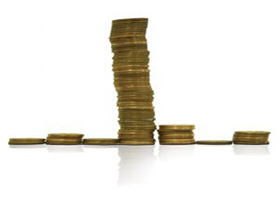


Anyway, I was inspired to write this post after seeing news this morning that both Malaysia and Mozambique are looking to set up new SWFs. As such, I thought I’d do a rundown of all of the recently announced (since August anyway) SWFs around the world. So without further ado:
Australia‘s debate over a new commodity fund for mining revenues has resurfaced.
Bangladesh is in the planning phase for a SWF, which will be modeled on Singapore’s GIC and could be worth as much as half a billion dollars. The impetus for the new fund was the country’s rapidly growing forex reserves.
Egypt is in the process of finalizing a new SWF, which will be given purview over 147 (!) state-owned firms and would ultimately be responsible for future privatizations and, ostensibly, managing the financial assets derived.
Israel is apparently — under the advice of the IMF — considering a new SWF for its forthcoming gas revenues.
Japan unveiled an economic stimulus in October that included using the country’s $1.7 trillion in foreign reserves to set up a new SWF. Interestingly, there is more to this than just reserve diversification and boosting returns; Japan may be planning to use the new SWF to make strategic investments in the resource industry.
Lebanon passed an energy law in August, which included a provision for the establishment of a new SWF. The new fund was created to manage potential future commodity revenues from offshore gas reserves.
Malaysia announced it is going to set up a second SWF to invest proceeds from the sales of government stakes in companies. The new SWF was one of the strongest recommendations of the National Advisory Economic Council, so it will probably happen.
Mauritius recently announced a new $500 million SWF drawn from currency revenues. Over the past two years, the Mauritian rupee has experienced a great deal of volatility vis-à-vis the dollar; down over 11 percent in 2008 and then up nearly 5 percent in 2009. So this is pretty sensible.
Mozambique is — apparently on the advice of the World Bank — now in the process of setting up a new SWF to help manage commodity rents.
Nigeria continues to plug away at getting their new fund statutory approval.
Papua New Guinea is still working on their new SWF, drawing on the help of international advisors.
South Africa has plans to set up a new SWF, called the African Development Fund, drawn from currency reserves. In addition to acting as a currency buffer, it will be a vehicle for investing in infrastructure.
Taiwan’s Finance Ministry is studying the possibility of setting up a new SWF akin to Singapore’s Temasek. Interestingly, it appears this fund will not be financed out of foreign exchange reserves. Rather, the underlying capital will come from existing state assets. The objective will be to transform these assets and render them more efficient to boost returns.
This post originally appeared on the Oxford SWF Project website.
